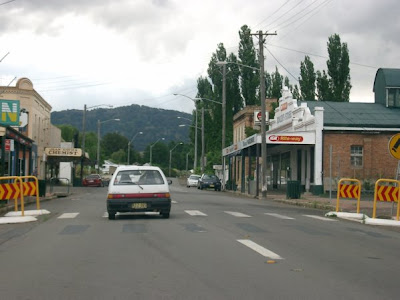On Personal Reflections, the week's posting began with Sunday Essay - chick flick books, social change and the desire to escape, further musings on the process of social change in Australia.
This was followed on 1 September by two posts: Blog Performance - August 2008 and then Political parties are NOT brands. The second complains about the misuse of language and the way that this affects thinking.
On 2 September I returned to the Haneef matter in The wheels continue to come off the Haneef case. As, indeed, they continue to do.
3 September saw two posts. Mechanistic management and Mr Rudd's education revolution suggests that whole Rudd education revolution is bound up in the semantics of modern managerialism, set within the bounds of past ideas, while 3 September 1939 - the Second World War starts simply notes that the anniversary of the start of the Second World War appears to have passed without any comment at all in the Australian media.
4 September saw Ethnicity, ideology and the sometimes slippery concept of Australian "independence" - Part One: "Independence" followed on 5 September by Ethnicity, ideology and the sometimes slippery concept of Australian "independence" - Part Two: Australian Identity . Both posts discuss aspects of Australian history and identity.
There were two posts on 6 September. The costs of standardisation and uniformity continues my constant discussion on management and public policy, while in Election Night 6 September 2008 I tried my hand at live blogging the WA election results.
7 September saw Sunday Snippets - As Darkness Falls, New England Woes, Hugh Frewen, a pot pouri post.
On New England Australia there were three posts. The week began with As Darkness Falls - a good read, a review of Bronwyn Parry's new book. This was followed on 3 September by NSW's home building collapse, a brief note on the decline in home building in NSW. 4 September saw New England Australia - blogs, an update on blogs located in or about New England.
There were also three posts on Regional Living Australia.
Regional Australia - how much does food cost pointed people to the Grocerychoice site as a way of getting information on average grocery prices in particular areas, while Regional Australia Food & Wine - Orange revisited simply pointed people to an earlier post on this topic. This was followed on 5 September by Musings on Australian food and wine which is as the name says.
There were just two posts on Managing the Professional Services Firm. Raising one's eyes unto the hills simply provided a copy of one of Gordon Smith's photos, while Establishing a Discipline of Practice - stocktake of posts is as the name says.






